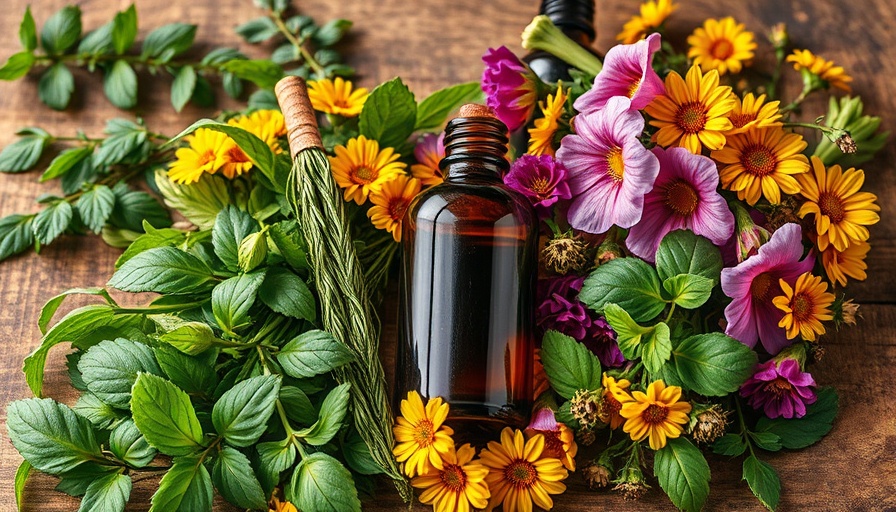
Rediscovering the Power of Healing Herbs
As many individuals begin to prioritize holistic approaches to health, the resurgence of interest in healing herbs presents a lively option for those seeking natural remedies. For ages, cultures across the globe have harnessed the healing properties of plants, integrating them into their daily lifestyles. But with the modern rise of herbalism, the question arises: how can we understand and utilize these powerful botanical allies today?
The Science Behind Healing Herbs
When considering herbal medicine, an essential understanding is that it strives to restore the body’s natural balance. According to Dr. Virender Sodhi, founder of the Ayurvedic and Naturopathic Medical Clinic, the holistic approach to health dismisses the isolation of parts of our bodies, advocating instead for the combined effects of plants. Many pharmaceutical drugs originate from compounds within these same herbs, demonstrating a shared lineage of healing efficacy.
Cultivating Relationships with Herbs
The four herbs highlighted offer a peek into the vast potential of nature's pharmacy:
- Licorice (Glycyrrhiza glabra): Traditionally treasured for its immune-modulating properties, licorice is more than just a candy flavor. Ancient societies utilized it to tackle everything from coughs to liver ailments. Its presence in many cough syrups today speaks to its expectorant capabilities, confirming its status as a herbal staple.
- Black Pepper (Piper nigrum): While renowned for enhancing culinary dishes, black pepper boasts anti-inflammatory and antimicrobial properties as well. Notably, its capacity to combat drug resistance aids in enhancing the treatment effects of certain pharmaceuticals, indicating its significant role in health management, especially in cancer care.
- Frankincense (Boswellia serrata): Known for its aromatic presence in spiritual practices, frankincense serves a critical function in reducing inflammation. There are documented cases of its effectiveness in potentially aiding remission for those with serious conditions such as Crohn’s disease.
- Bael: Located in the heart of India's rich medicinal landscape, this fruit-bearing tree is revered for its digestive benefits, used to combat gastrointestinal issues.
Incorporating Herbs into Your Daily Life
Transitioning to a more herbal-focused lifestyle doesn’t demand extensive knowledge or training. Instead, small changes can yield significant benefits. Here are some practical tips to get started:
- Add herbs to your meals: Simple ways to enhance your dishes can provide a flavor boost along with health benefits. Consider sprinkling black pepper or adding licorice root in smoothies for a novel taste and a health kick.
- Herbal teas: Create an evening ritual with calming teas rich in herbs like licorice or prompts for digestion, like bael, to wind down and promote wellness.
- Consulting experts: Local health and wellness centers, especially in areas like San Antonio, are great resources for finding knowledgeable practitioners who can provide insights into using these herbs safely.
The Future of Herbal Medicine
As society gravitates toward more sustainable practices, the future of herbal medicine appears bright. More individuals are likely to explore the fullness of what nature offers, directly challenging the rise of synthetic pharmaceuticals. By supporting local herbal product businesses and education events focused on these teachings, communities can embrace alternative approaches for enhanced well-being.
Conclusion: Embrace the Wisdom of Nature
Understanding the benefits of healing herbs extends beyond mere historical practices; it involves actively engaging with the natural world around us. As we strive for optimal health and wellness, recognizing the potential within herbal medicine becomes vital. If you’re ready to take your first steps toward a more naturally healthy life, explore the variety of herbal options that resonate with your needs, and perhaps even incorporate them into your regular health and wellness routine.
 Add Element
Add Element  Add Row
Add Row 



Write A Comment